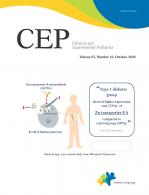Article Contents
| Clin Exp Pediatr > Volume 63(10); 2020 |
|
Abstract
Background
Purpose
Methods
Results
Acknowledgments
Supplementary materials
Supplement 2.
Table 1.
Values are presented as number (%).
M-RACHS, new modified version of the Risk Adjustment for Congenital Heart Surgery; CoA, coarctation of the aorta; TOF, tetralogy of Fallot; DORV, double-outlet right ventricle; PS, pulmonary stenosis; TGA, transposition of the great arteries; VSD, ventricular septal defect; cAVSD, complete atrioventricular septal defect; PA, pulmonary atresia; AS, aortic stenosis; TAPVR, total anomalous pulmonary venous return; CHD, congenital heart disease.
Table 2.
Values are presented as number (%) or median (range).
GA, gestational age; PPHN, persistent pulmonary hypertension of the newborn; IVH, intraventricular hemorrhage; M-RACHS, new modified version of the Risk Adjustment for Congenital Heart Surgery; PGE1, prostaglandin E1.
Boldface indicates a statistically significant difference with P<0.05.
Table 3.
Values are presented as number (%), median (range), or mean±standard deviation.
GA, gestational age; IVH, intraventricular hemorrhage; M-RACHS, new modified version of the Risk Adjustment for Congenital Heart Surgery; PGE1, prostaglandin E1; SpO2, saturation of peripheral oxygen.
Boldface indicates a statistically significant difference with P<0.05.
Table 4.
| Variable |
Total (n=78) |
Intervention (n=68) |
||
|---|---|---|---|---|
| aORa) (95% CI) | P-value | aORb) (95% CI) | P-value | |
| VLBW | 7.45 (1.11−50.67) | 0.039 | 23.63 (1.24−451.06) | 0.036 |
| PPHN | 31.57 (1.64−609.28) | 0.022 | ||
| BPD | 9.84 (1.71−56.44) | 0.010 | 33.07 (2.49−438.61) | 0.008 |
| M-RACHS≥5 | 18.20 (3.51−94.43) | 0.001 | 51.45 (2.52−1,050.04) | 0.010 |
aOR, adjusted odds ratio; CI, confidence interval; VBLW, very low birth weight; PPHN, persistent pulmonary hypertension of the newborn; BPD, bronchopulmonary dysplasia; M-RACHS, new modified version of the Risk Adjustment for Congenital Heart Surgery; GA, gestational age; NEC, necrotizing enterocolitis.
a) Covariate factors included in the logistic-regression models were GA<32 weeks at birth, VLBW, PPHN, BPD, and M-RACHS category ≥5.





 PDF Links
PDF Links PubReader
PubReader ePub Link
ePub Link PubMed
PubMed Download Citation
Download Citation


